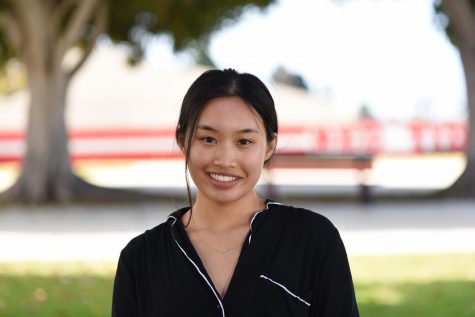Letter from the Editors: New Representation in the Media
The movement to push for diversity in popular media has often been disregarded as impossible, or foolish at best. Now, that belief is completely outdated.
With major blockbusters like “Black Panther” entering the spotlight and reaping success, increasing racial representation is a completely feasible and important shift in the American film industry.
Most students, regardless of age, learn by example. Seeing minorities in theatres has a beneficial effect on students who feel that race limits their futures.
In fact, seeing their cultures being celebrated in the public eye encourages and inspires students to achieve goals that seem out of reach, and maintain a higher self-esteem.
Exposure to people of color in recent major films like “Crazy Rich Asians” sets a precedent in the entertainment industry’s path to extend roles and jobs towards diverse individuals. Previously, the main excuse by Hollywood producers to exclude people of color from popular films was that those movies would not draw crowds nor profit.
The success behind “Crazy Rich Asians” has not only proved that stigma wrong, but it also has encouraged the same producers to find value in racial inclusion and to begin to form diverse casts.
This value shift isn’t just restricted to the movie screen. The desire for more multicultural representation has surged amongst younger generations.
As a result, large media companies are supplying the demand for multiculturality in their shows and films. In general, movies on Netflix and less prominent private film companies have made an effort to include more people of color in their casts, and audiences are in full support. A popular example would be the Netflix film “To All the Boys I’ve Loved Before,” which features an Asian girl as the main character.
These films are gaining notoriety for all the right reasons, providing characters that are not restricted within racial archetypes and stereotypes.
Rather than ethnicity being the basis for a character’s personality, these characters are viewed as unique individuals.
Even with all of these advancements, some may argue that representation in this films are shallow and don’t actually contribute to the effort towards greater racial quality. But early exposure to these films is essential. Media is one of the main ways that people are affected in terms of self-image. Forming these positive images of minorities can be helpful to equate diversity with normalcy, and that these differences are important.
Especially in the United States, where many minorities make up a lower percentage of the population, for people are not accustomed to other cultures, it can give them an opportunity to see a new perspective. It increases empathy, showing that everyone essentially shares the same aspirations and struggles in life.
The focus of these movies have been on promoting Asian representation in the media, but the films have also had an influence on other crowds as well. Just as “Coco” received a positive response from all audiences, regardless of ethnic descent, “Crazy Rich Asians” have inspired all people of color through the simple concept of minorities being part of major motion pictures.
Many students might believe that they don’t have a voice to create change. But the call for diversity in media comes from everyone.
In order to ensure that our media reflects our reality, audiences must not be passive, and actively demand more diverse films.

Phoebe Lai is a senior and one of our Editors-in-Chief this year. Last year she was EIC as well, and she looks forward to leading the staff as they publish...